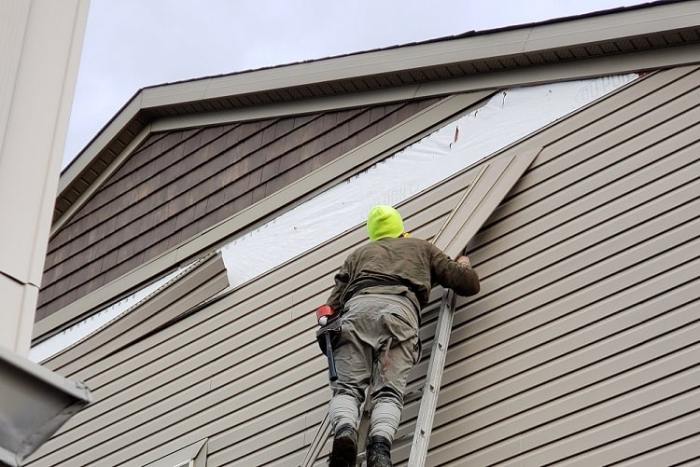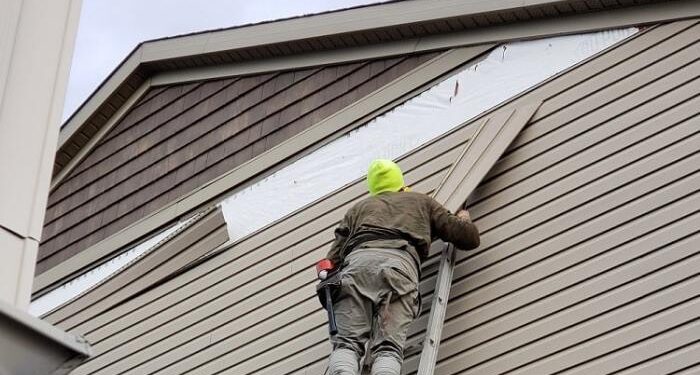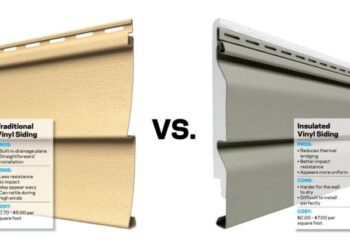As homeowners, we all know the importance of maintaining our properties. One crucial aspect often overlooked is storm damage siding repair. This essential task not only enhances the aesthetic appeal of your home but also plays a significant role in protecting it from potential risks.
Join us on a journey through the world of storm damage siding repair, where we explore its significance, common types of damage, assessment steps, repair methods, and more.
 When it comes to assessing storm damage on siding, it is essential to follow a systematic approach to accurately determine the extent of the damage and take appropriate repair measures. Using the right tools and techniques can help in documenting the damage for insurance purposes, ensuring a smooth claims process.
When it comes to assessing storm damage on siding, it is essential to follow a systematic approach to accurately determine the extent of the damage and take appropriate repair measures. Using the right tools and techniques can help in documenting the damage for insurance purposes, ensuring a smooth claims process.
Importance of Storm Damage Siding Repair
Storm damage siding repair is crucial for maintaining the longevity and structural integrity of a home. When siding is damaged during a storm, it can leave your home vulnerable to various risks and issues if not repaired promptly.Potential Risks of Neglecting Siding Repair
- Water Damage: Damaged siding can allow water to seep into the walls of your home, leading to mold growth, rotting wood, and structural damage.
- Pest Infestation: Holes or cracks in the siding can provide entry points for pests like termites or rodents, causing further damage to your home.
- Decreased Energy Efficiency: Gaps in the siding can result in air leaks, making it harder to regulate the temperature inside your home and increasing energy bills.
Common Types of Storm Damage to Siding
During a storm, siding can be subjected to various types of damage, compromising both its structural integrity and visual appeal. It's essential to recognize the signs of storm damage early to prevent further issues.Cracks
Cracks in siding can occur as a result of strong winds, hail, or flying debris during a storm. These cracks can allow moisture to seep into the underlying layers, leading to rot, mold, and other serious issues. Visually, cracks can detract from the overall appearance of the siding, making it look worn and damaged.Dents
Dents are another common type of storm damage that siding can experience. Hail is a common culprit for causing dents in siding, as well as debris propelled by high winds. While dents may not always affect the functionality of the siding, they can significantly impact the aesthetic appeal of the exterior of the house.Moisture Infiltration
Moisture infiltration is a severe consequence of storm damage to siding. When cracks, dents, or other forms of damage allow water to penetrate the siding, it can lead to rot, mold growth, and structural issues. Signs of moisture infiltration include discoloration, peeling paint, and a musty odor.Steps for Assessing Storm Damage Siding Repair
 When it comes to assessing storm damage on siding, it is essential to follow a systematic approach to accurately determine the extent of the damage and take appropriate repair measures. Using the right tools and techniques can help in documenting the damage for insurance purposes, ensuring a smooth claims process.
When it comes to assessing storm damage on siding, it is essential to follow a systematic approach to accurately determine the extent of the damage and take appropriate repair measures. Using the right tools and techniques can help in documenting the damage for insurance purposes, ensuring a smooth claims process.
Inspection Process
- Start by visually inspecting the entire exterior of your property, looking for signs of damage such as cracks, dents, or missing pieces.
- Use a ladder to get a closer look at the higher areas of the siding where damage might be less visible from the ground.
- Check for water stains or moisture damage on the interior walls, as this could indicate a problem with the siding.
- Take note of any areas where the siding is loose or pulling away from the structure.
Tools and Techniques
- Binoculars can be handy for inspecting higher areas without the need for a ladder.
- A flashlight can help you see any damage in dimly lit areas or corners.
- A moisture meter can be used to detect hidden water damage within the walls.
- A digital camera or smartphone can be used to document the damage through photos or videos for insurance purposes.
Importance of Documentation
- Documenting the storm damage is crucial for filing an insurance claim and getting the necessary coverage for repairs.
- Include detailed descriptions of the damage, along with photographs, to support your claim and ensure a smoother claims process.
- Keep all documentation organized and easily accessible in case you need to provide evidence to your insurance company.
Methods for Repairing Storm-Damaged Siding
When it comes to repairing storm-damaged siding, there are various methods that can be used based on the type of damage sustained. It is important to choose the right repair method to ensure the longevity and aesthetics of your siding.Replacing Panels
- Inspect the extent of the damage and identify the panels that need to be replaced.
- Remove the damaged panels carefully to avoid causing further harm to the surrounding siding.
- Install new panels, making sure they match the color and texture of the existing siding for a seamless finish.
Filling Cracks
- Clean the cracked area and remove any debris or loose material.
- Apply a suitable filler material to the crack and smooth it out for a uniform surface.
- Paint over the filled crack to blend it with the rest of the siding.
Repainting
- If the storm damage has affected the paint on your siding, repainting may be necessary.
- Choose a high-quality exterior paint that matches the color of your existing siding.
- Prepare the surface by cleaning and priming it before applying the new paint.
Matching New Materials to Existing Siding
When replacing damaged siding panels or repainting sections, it is crucial to match the new materials to the existing siding for a cohesive look. Ensure that the color, texture, and style of the new materials closely resemble the original siding to avoid any noticeable differences.Tips for DIY Repairs versus Hiring Professionals
- DIY repairs can be cost-effective but may require specialized tools and skills.
- Consider your level of expertise and the complexity of the repair before deciding to tackle it yourself.
- Hiring professionals ensures a high-quality repair job and saves you time and effort.
- Get quotes from multiple contractors and compare their services before making a decision.







